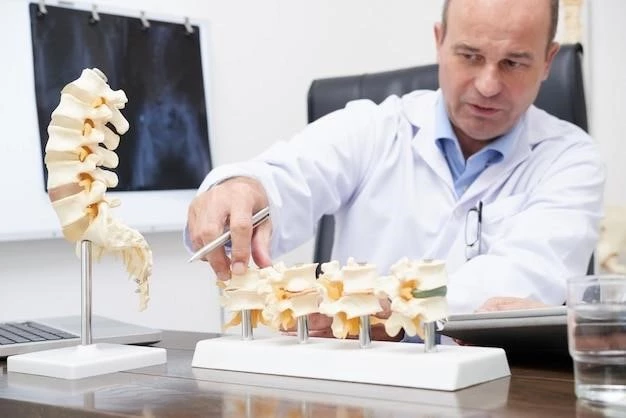Introduction to Radiation-induced Lumbosacral Plexopathy
Radiation-induced lumbar plexopathy (RILP) or radiation-induced lumbosacral plexopathy (RILSP) is nerve damage in the pelvis and lower spine area caused by therapeutic radiation treatments. RILP is a rare side effect of external beam radiation therapy and both interstitial and intracavity brachytherapy radiation implants. In general terms, such nerve damage may present in stages as…
Radiation-induced Lumbar Plexopathy Overview
Radiation-induced lumbar plexopathy (RILP) or radiation-induced lumbosacral plexopathy (RILSP) refers to nerve damage in the pelvis and lower spine area resulting from therapeutic radiation treatments. This condition, though rare, can present with varying degrees of sensory and motor impairment, often affecting the lumbar and sacral plexus. The manifestations of radiation-induced lumbosacral plexopathy usually emerge following radiation therapy for pelvic malignancies or cancers in the lower abdominal region. Understanding the specific characteristics and implications of this condition is essential for accurate diagnosis and effective management.

Clinical Presentation and Diagnosis of Radiation-induced Lumbosacral Plexopathy
Patients with radiation-induced lumbosacral plexopathy commonly present with bilateral, asymmetric leg weakness, sensory disturbances, and altered reflexes. The diagnosis involves detailed neurological assessments, imaging studies, and electromyography to evaluate nerve function and rule out other conditions.
Symptoms and Signs
Patients with radiation-induced lumbosacral plexopathy typically experience bilateral, asymmetric leg weakness, sensory alterations, and impaired reflexes. Motor deficits in the lower extremities are common, often showing distal predominance in L5-S1 distribution. Additionally, the condition may present with atrophy, fasciculations, and abnormal tendon reflexes. Pain may develop in some individuals, while others report a combination of weakness and sensory disturbances. The clinical presentation often indicates the involvement of the lumbar and sacral plexus regions, necessitating thorough neurological evaluations for accurate diagnosis.
Differential Diagnosis
When evaluating patients with suspected radiation-induced lumbosacral plexopathy, healthcare providers must consider differential diagnoses such as lumbar radiculopathy, cauda equina syndrome, peripheral neuropathies, and spinal cord compression. Distinguishing features, including the chronology of symptoms, distribution of deficits, and response to maneuvers like spinal flexion or extension, play a crucial role in the differential diagnosis process. Imaging studies, electromyography, and nerve conduction studies are essential for accurate differentiation from other conditions presenting with similar symptoms.

Causes and Risk Factors
The primary cause of radiation-induced lumbosacral plexopathy is therapeutic radiation treatment targeting pelvic or lower abdominal malignancies. Nerve damage results from exposure to radiation during cancer therapy, leading to sensory and motor impairments. Risk factors include the specific area treated with radiation, the intensity and duration of radiation exposure, as well as individual patient factors influencing nerve sensitivity to radiation damage.
Therapeutic radiotherapy targeting pelvic or lower abdominal malignancies can lead to radiation-induced lumbosacral plexopathy (RILP). This condition results from the exposure of the lumbosacral plexus to radiation, causing sensory and motor impairments. Studies indicate that accurate delineation and precise radiation dosage planning play a crucial role in minimizing radiation-induced damage to the lumbosacral plexus and reducing the risk of developing RILP.
Predisposing Factors for Radiation-induced Lumbosacral Plexopathy
Mechanisms contributing to the development of radiation-induced lumbosacral plexopathy include the dose and volume of irradiated tissue, the delivery technique of radiotherapy, and the anatomical proximity of the lumbosacral plexus to the targeted malignancy. Patient-specific factors such as pre-existing neuropathy conditions, genetic predispositions, and individual variations in nerve sensitivity to radiation effects also play significant roles in predisposing individuals to this radiation-induced neurological disorder.
Treatment and Management of Radiation-induced Lumbosacral Plexopathy
Physicians employ various therapeutic approaches for the management of radiation-induced lumbosacral plexopathy, including pain management, physical therapy, and medications to alleviate symptoms. Current research emphasizes the importance of tailored treatment plans addressing individual patient needs and optimizing functional outcomes. Additionally, interventions may involve a combination of pharmacological agents, rehabilitation strategies, and interventions to improve quality of life for affected individuals.
Effects of Radiotherapy on the Lumbosacral Plexus
Radiotherapy for pelvic or lower abdominal malignancies can have detrimental effects on the lumbosacral plexus, potentially leading to radiation-induced lumbosacral plexopathy. This condition arises due to the exposure of the plexus to therapeutic radiation, resulting in sensory and motor impairments. Research suggests that precise radiation dose planning and techniques are crucial in minimizing damage to the lumbosacral plexus and lowering the incidence of radiation-induced complications.
Physical Therapy and Rehabilitation Strategies
Physical therapy and rehabilitation play crucial roles in managing radiation-induced lumbosacral plexopathy. Rehabilitation strategies aim to improve mobility, strength, and functional independence in affected individuals. Physical therapy interventions focus on restoring range of motion, addressing muscle weakness, and enhancing overall physical function. A multidisciplinary approach involving physiotherapists, occupational therapists, and other healthcare professionals is often employed to tailor rehabilitation programs to the specific needs of each patient, promoting optimal recovery and quality of life.
Prevention and Prognosis
Strategies for preventing radiation-induced lumbosacral plexopathy involve optimizing radiation dosage planning and techniques, including accurate delineation of the lumbosacral plexus to minimize damage. Prognostic factors affecting recovery include the extent of nerve damage, timing of diagnosis, adherence to treatment regimens, and individual variability in response to therapies. Early detection and tailored management can improve outcomes and quality of life for individuals affected by this condition.
Strategies for Preventing Radiation-induced Lumbosacral Plexopathy
Preventing radiation-induced lumbosacral plexopathy involves meticulous radiation dosage planning and techniques to protect the lumbosacral plexus during cancer treatment. Advanced imaging techniques and intensity-modulated radiotherapy (IMRT) are utilized to minimize radiation exposure to the plexus and reduce the risk of developing this neurological disorder. Additionally, patient-specific factors and individual variability in radiation sensitivity should be considered when devising preventive strategies.
Prognostic Factors Affecting Recovery
Prognostic factors influencing the recovery from radiation-induced lumbosacral plexopathy include the extent of nerve damage, the timing of diagnosis, adherence to treatment plans, and individual variability in response to therapies. Prompt identification, tailored management strategies, and patient-specific considerations play crucial roles in determining the prognosis and functional outcomes for individuals with radiation-induced lumbosacral plexopathy.
Research and Advancements in Radiation-induced Lumbosacral Plexopathy
Recent studies focus on novel treatment modalities for radiation-induced lumbosacral plexopathy, exploring the efficacy of intensity-modulated radiotherapy (IMRT) and advanced imaging techniques in reducing nerve damage. Additionally, ongoing research investigates the potential of targeted therapies and neuroprotective agents to enhance functional recovery and quality of life in individuals affected by this condition.
Recent Studies on Treatment Modalities
Recent studies have focused on innovative treatment approaches for radiation-induced lumbosacral plexopathy, exploring the efficacy of intensity-modulated radiotherapy (IMRT) and advanced imaging techniques to reduce nerve damage. Additionally, ongoing research investigates the potential of targeted therapies and neuroprotective agents to enhance functional recovery and improve the quality of life for individuals affected by this condition.
Exploration of Novel Therapeutic Interventions
Ongoing research explores novel therapeutic interventions for radiation-induced lumbosacral plexopathy, focusing on the efficacy of targeted therapies, neuroprotective agents, and innovative treatment modalities. By investigating these novel approaches, researchers aim to enhance functional recovery, minimize symptoms, and improve the quality of life for individuals affected by this condition.
Case Studies and Clinical Outcomes
Select case reports document the challenging diagnosis and management of radiation-induced lumbosacral plexopathy. Long-term follow-up assessments highlight varying clinical outcomes and quality of life implications for affected individuals. Comprehensive evaluations and tailored treatment approaches are essential in optimizing patient care and enhancing functional recovery in cases of radiation-induced lumbosacral plexopathy.
Review of Select Case Reports
Throughout various case reports, the challenging diagnosis and management of radiation-induced lumbosacral plexopathy have been documented. Long-term follow-up assessments provide insights into the diverse clinical outcomes and implications for the quality of life in affected individuals. These cases underscore the importance of comprehensive evaluations and personalized treatment approaches to optimize patient care and promote functional recovery in instances of radiation-induced lumbosacral plexopathy.
Long-term Follow-up and Quality of Life Assessments
Long-term follow-up evaluations and quality of life assessments provide valuable insights into the clinical outcomes and impact of radiation-induced lumbosacral plexopathy on affected individuals. These assessments play a crucial role in monitoring recovery trajectories, identifying persistent symptoms, and determining the overall well-being and functional status of patients over extended periods post-treatment.
